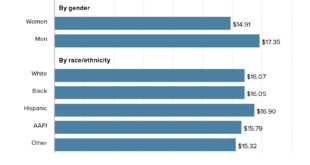This sequel to the Groundswell report includes projections and analysis of internal climate migration for three new regions: East Asia and the Pacific, North Africa, and Eastern Europe and Central Asia. Qualitative analyses of climate-related mobility in countries of the Mashreq and in Small Island Developing States (SIDS) are also provided. This new report builds on the scenario-based modeling approach of the previous Groundswell report from 2018, which covered Sub-Saharan Africa, South Asia, and Latin America. The two reports’ combined findings provide, for the first time, a global picture of the potential scale of internal climate migration across the six regions, allowing for a better understanding of how slow-onset climate change impacts, population dynamics, and development contexts shape mobility trends.
Key projection:
Over 216 million people could move within their countries by 2050 across six regions,
The report discusses their modeling (there is more than this) :
Both Groundswell reports use the same modeling approach, which allows for direct comparison of results and for aggregation to derive the global figure for internal climate migration. They take a scenario-based approach and implement a modified form of a gravity model to isolate the projected portion of future changes in spatial population distribution that can be attributed to slow-onset climate factors up to 2050. The Spotlight discusses the key innovations and scope of the modeling approach.
Quiz question for a class: Is the 216 million people a lot or a little?

